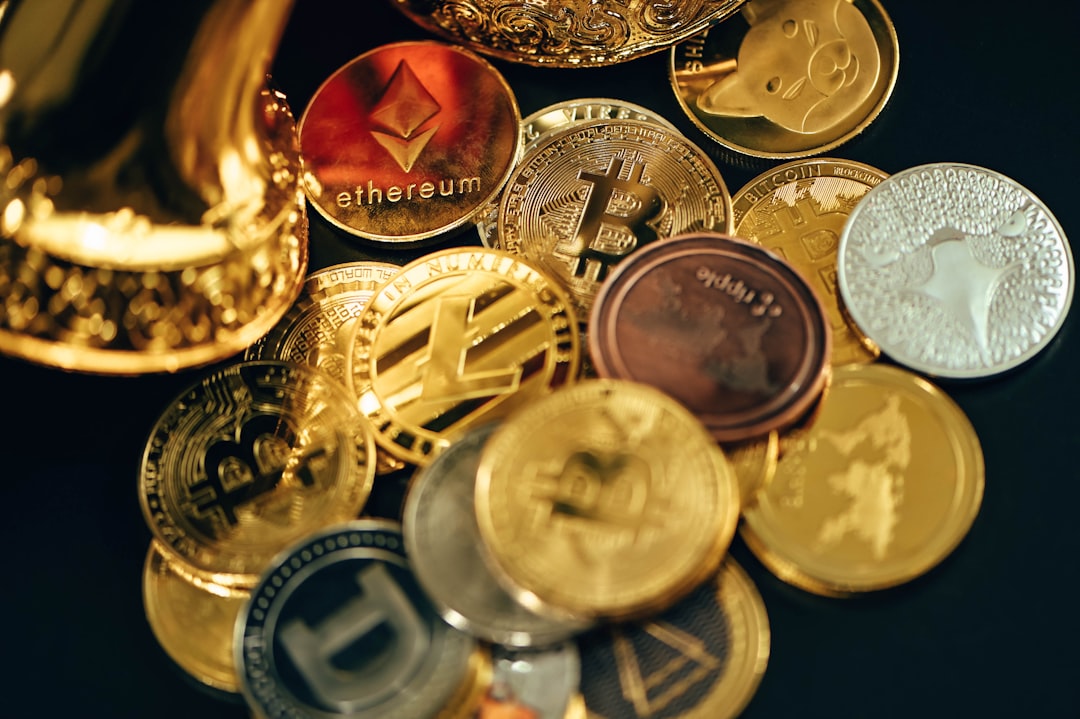Turning Digital Art into Continuous Income, A Practical Tutorial for NFT Beginners

Every time you hit the “Save” button on a new illustration, you’re closing a door on a one‑time sale. The real challenge for many creators is turning that static masterpiece into a stream of income that keeps growing without constant hands‑on effort. NFTs have opened a door that was once gated behind traditional galleries or print runs, but the path from a single piece to a sustainable income is not automatic. Below is a step‑by‑step guide that takes you from concept to passive revenue, designed specifically for beginners who want to earn from their digital art without burning out.
Why NFTs Are Attractive for Artists
NFTs let you attach a verifiable, blockchain‑based ownership record to a digital file. This means every time your artwork is sold or resold, you receive a percentage of that transaction. Because the process is automated, you do not have to chase royalties manually. Additionally, the global marketplace allows you to reach collectors who are actively searching for unique pieces, often at prices that far exceed traditional prints. The combination of global reach, automatic royalties, and a low barrier to entry makes NFTs an ideal platform for artists who want a passive income stream.
Getting the Basics Right: Platforms and Wallets
The first step is to choose a marketplace and set up a crypto wallet. Popular marketplaces like OpenSea, Rarible, and Mintable support a variety of blockchain networks, each with its own fee structure and community. Ethereum remains the most established, but newer chains such as Polygon offer lower gas fees and are rapidly growing. Once you’ve selected a platform, you’ll need a wallet that can store both the NFT and the cryptocurrency used for gas fees and payouts. MetaMask is a popular choice because it integrates seamlessly with most marketplaces and supports a wide range of tokens.

Creating a strong, unique username and a consistent visual style will help your profile stand out. Make sure your wallet is backed up with a secure seed phrase, as losing access could mean losing your entire portfolio. Some artists opt for custodial wallets provided by marketplaces to simplify the process, but you trade a bit of control for convenience.
Crafting an NFT That Sells
Your artwork is your product, so the creative process deserves careful attention. Start with a concept that can be expressed in a single, self‑contained piece this works best for limited editions. Consider using high‑resolution files, and think about how the piece will appear at various sizes. Adding layers or hidden details can increase the perceived value. Once you’re satisfied, export your file in a format that is widely accepted, such as PNG or GIF, and double‑check that the dimensions and file size meet the marketplace’s guidelines.

Next, decide on the edition size. A smaller edition (for example, 50 copies) can create scarcity, while a larger edition (500 or 1,000 copies) allows for more sales but may reduce exclusivity. Many artists release an initial drop of a few hundred pieces and then create secondary drops if demand is high. Always keep track of how many have been sold versus how many are available.
Setting Smart Royalties
Royalties are a key source of passive income. Most marketplaces let you set a royalty percentage that will automatically be applied to every secondary sale. The standard is between 5% and 10%, but you can choose higher if your work is highly valuable or lower to encourage more frequent trades. Some platforms offer the ability to set different royalty rates for primary and secondary sales; however, this can be confusing for buyers, so many artists stick with a single rate. Keep in mind that the chosen blockchain may impose a maximum royalty cap, so check the platform’s policy before finalizing.
When setting royalties, think about your long‑term strategy. If you anticipate a strong secondary market, a higher royalty can significantly boost your earnings over time. If you prefer quick liquidity, a lower royalty may encourage collectors to trade more frequently. Either way, the royalty mechanism is the backbone of passive income in the NFT world.
Marketing and Community Building
Creating great art is only part of the equation; you also need to let people know it exists. Building a community around your work on social media platforms especially Twitter, Discord, and Instagram allows you to share updates, sneak peeks, and personal stories that resonate with potential buyers. Use consistent branding across all channels, and consider hosting a small giveaway to incentivize follows. Engaging with other artists and participating in NFT events (both online and offline) helps you tap into established collector bases.
When you release a new drop, send out a newsletter or a Discord announcement that explains the concept, the edition size, and the royalty structure. Transparency builds trust and can drive sales. Also, consider collaborating with other creators; cross‑promotion expands your audience and increases the perceived value of both parties’ work.
Tracking Performance and Adjusting Strategy
Once your NFTs are live, monitoring sales data becomes critical. Most marketplaces provide analytics dashboards that show views, likes, and transaction history. Look for patterns: Are certain pieces selling faster? Do collectors prefer certain styles or themes? Use this data to refine your future drops. Additionally, track the performance of your marketing efforts measure click‑through rates on social media posts, email open rates, and conversion rates from your Discord channel. By continuously optimizing both your creative output and your promotion tactics, you can increase your passive income over time.
Scaling Up: Beyond the First Batch
After your initial drop has gained traction, it’s time to think about scaling. One popular approach is to create a series perhaps a set of 10 pieces that share a common narrative or visual motif. Bundling them into a single NFT can create a “complete set” incentive for collectors, often allowing you to command a higher price. Another strategy is to introduce dynamic NFTs, where the artwork changes over time or in response to external data. These can generate ongoing engagement and repeated sales.
Diversifying your revenue streams can also solidify passive income. Offer limited edition prints of your most popular pieces, or create a subscription service where fans receive early access or exclusive content. Some artists also sell licenses for use of their artwork in commercial projects, further monetizing their creations. The key is to keep your focus on the core value you provide unique, well‑crafted art while exploring complementary channels that fit your brand.
With the groundwork laid, you now have a clear roadmap from creating a single piece to building a passive income pipeline. It takes discipline to maintain consistency, but the automated royalty system and the global reach of NFT marketplaces mean that your effort can continue to pay off long after the initial sale. Start small, learn from each drop, and let your art generate revenue while you focus on creating more.

Jay Green
I’m Jay, a crypto news editor diving deep into the blockchain world. I track trends, uncover stories, and simplify complex crypto movements. My goal is to make digital finance clear, engaging, and accessible for everyone following the future of money.
Discussion (10)
Join the Discussion
Your comment has been submitted for moderation.
Random Posts

Future-Focused Investing - Turning Objectives into Wealth
Turn vague dreams into wealth by setting SMART goals, defining exact amounts and timelines, then disciplined planning and investing that grows with you.
1 year ago

Beyond Short Term Fluctuations Crafting a Long Term Investment Roadmap
Ignore short term swings. Build a long term roadmap that ties your investments to life goals, turning volatility into an ally that steadily grows your wealth over time.
4 months ago

Diversification Strategies That Improve Risk Adjusted Returns
Learn how smart diversification, beyond simple spread, boosts Sharpe and Sortino ratios, protecting growth while smoothing volatility.
10 months ago

Smart NFT Strategies for Reliable Income and Tax Efficiency
Build a passive NFT portfolio with diverse assets, smart royalty management, and tax, aware structuring to turn tokens into reliable income while keeping taxes low.
1 week ago

Integrating Wallets with Staking Tools Step by Step
Learn how to connect your wallet to staking tools in clear, simple steps, update firmware, secure your seed, choose a trusted platform, and start earning rewards safely.
1 month ago
Latest Posts

Tax Strategies for Long Term Passive Earnings
Learn how smart tax planning can boost your passive income: choose efficient vehicles, use shelters, time gains, and keep more of what you earn.
1 day ago

Passive Income Education Through Legal, Tax, and Risk Management
Turn a side hustle into lasting, hands, off wealth by mastering legal structure, tax strategy, and risk protection, the three pillars that safeguard capital and ensure steady dividends.
1 day ago

Crypto Exchange Basics for Steady Income
Build steady crypto income by defining clear goals, choosing the right exchange tools, and sticking to a disciplined strategy for consistent returns.
2 days ago

